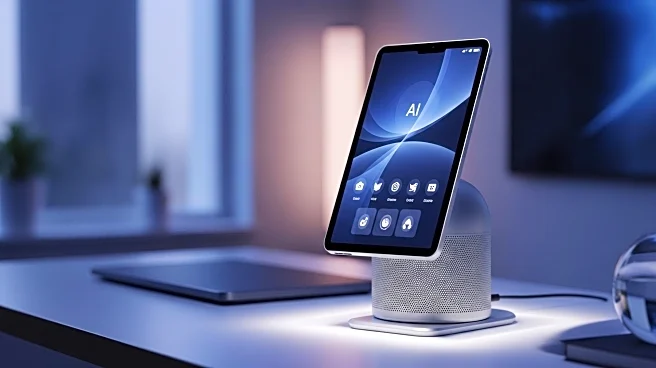What's Happening?
Plaud AI has introduced the Note Pro, a standalone AI note-taking device, marking a resurgence in interest for such technology. The device, which is credit card-sized, offers advanced audio recording capabilities with five microphones and a 50-hour battery life after a 2-hour charge. It features a small AMOLED display for status updates and a power button that highlights key conversation points. The Note Pro integrates with a smartphone app using large language models from OpenAI, Anthropic, and Google, providing multimodal analysis of recorded content. It is designed for professional use, offering over 2,000 templates for various fields.
Why It's Important?
The introduction of the Note Pro highlights a shift towards specialized AI devices that complement smartphones rather than replace them. This device caters to professionals who require efficient and accurate note-taking solutions, potentially transforming workflows in fields like journalism, medicine, and law. The use of AI to enhance human capabilities, such as memory and focus, underscores the growing integration of AI in everyday tasks. However, privacy concerns remain, especially in sensitive environments, necessitating robust security measures.
What's Next?
Plaud AI's Note Pro is available for preorder, with shipping expected in October. As the device enters the market, it will be crucial to monitor consumer reception and address privacy concerns. The success of the Note Pro could inspire further innovation in standalone AI devices, prompting other tech companies to explore similar products. Additionally, the device's performance in real-world scenarios will determine its viability as a tool for professionals.
Beyond the Headlines
The Note Pro's development reflects broader trends in AI technology, emphasizing the importance of human-AI collaboration. As AI becomes more integrated into daily life, ethical considerations around data privacy and security will become increasingly important. The device's ability to capture and analyze conversations could lead to new insights into human communication patterns, potentially influencing future AI applications.

